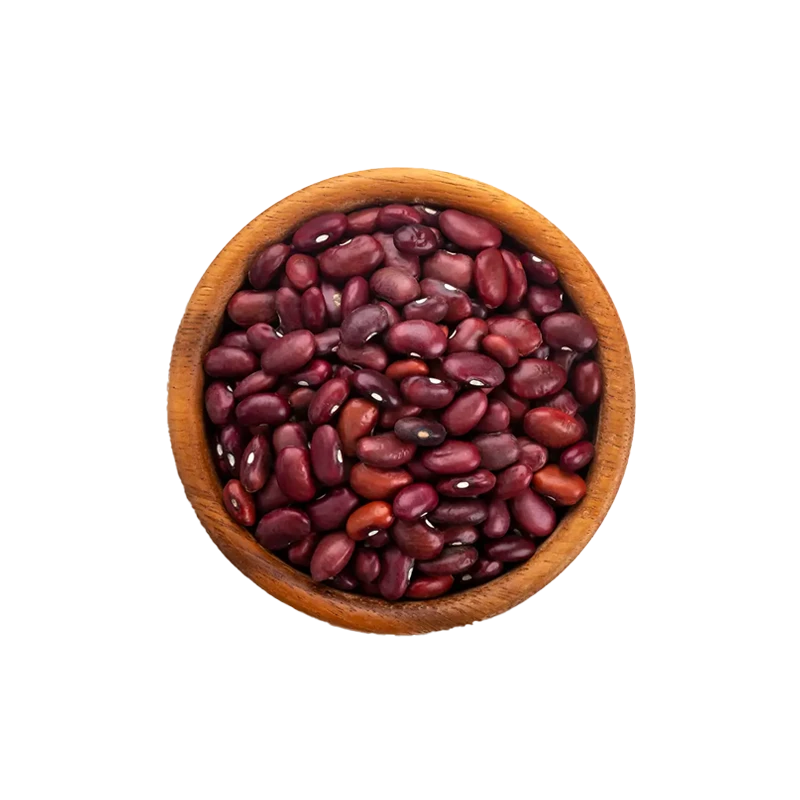Beans — Nutrients, Health Benefits, And Shopping Tips

Written by Listonic Team
Last update on September 4, 2024
Nutrients
Nutrition facts
Amount per 100 g
Calories
🔥 347 kcal
| Nutrition per: 100 g | Value | % Daily Value* |
|---|---|---|
| Carbs | 63 g | 22.91% |
| Fiber | 16 g | 57.14% |
| Sugars | 2 g | 4% |
| Glycemic Index | 34 | - |
| Protein | 21 g | 42% |
| Sodium | 12 mg | 0.52% |
| Total Fat | 1 g | 1.28% |
*The % of Daily Value (DV) tells you how much a nutrient in a serving of food contributes to a daily diet. 2,000 calories a day is used for general nutrition advice.
21 g
💪 High Protein Content
16 g
✅ High Fiber Content
Key takeaways
Health benefits
- Rich in fiber, which supports digestive health, helps maintain regular bowel movements, and promotes a healthy gut microbiome.
- High in protein, making them an excellent plant-based protein source for muscle growth and repair.
- Supports heart health by lowering cholesterol levels and providing essential nutrients like folate and magnesium.
- Provides sustained energy from complex carbohydrates, making them a great option for maintaining energy levels throughout the day.
- Contains essential vitamins and minerals such as iron, potassium, and B vitamins, which are important for overall health and well-being.
Health risks
- Digestive discomfort such as bloating, gas, or diarrhea due to the high fiber content and certain carbohydrates in beans.
- Potential allergen for some individuals, particularly those allergic to legumes, causing symptoms like itching, swelling, or difficulty breathing.
- Phytic acid content which can inhibit the absorption of certain minerals, potentially leading to deficiencies if beans are a large part of the diet.
- Risk of contamination with harmful bacteria like E. coli if beans are not properly cooked, especially with certain types like kidney beans.
How to choose beans
For dried beans, select ones that are whole and uniform in size and color, as this helps ensure even cooking. The beans should be free from cracks and not look shriveled, indicating they are fresh and have been stored properly.
Avoid beans that have a musty smell, visible mold, or are damp, as these conditions can affect both taste and safety. Discolored beans should also be avoided as they may have been exposed to moisture and could lead to uneven cooking.

How to store beans
Dried beans should be stored in an airtight container in a cool, dry place. A pantry or kitchen cabinet is suitable to keep them free from moisture and pests. Properly stored dried beans can last up to a year.
Moisture and pests are the main concerns for dried beans, so avoid these conditions. Storing beans near strong-smelling foods can cause them to absorb unwanted odors. Regularly checking for pests helps maintain their quality and safety.
✅ Extra Tip
How long do they last?
Dry beans can last for 1-2 years when stored in an airtight container in a cool, dry place. They may take longer to cook as they age but remain safe to eat. Cooked beans should be refrigerated and consumed within 3-5 days. For longer storage, cooked beans can be frozen for up to 6 months.
What to do with leftovers?
Leftover beans can be incredibly versatile in the kitchen. Add them to soups, stews, or chili for extra protein and fiber. They can also be mashed and used as a base for bean dips or refried beans, perfect for serving with tortilla chips or spreading on sandwiches.
Beans are great in salads, providing a hearty, filling component. You can also blend them into smoothies for an unexpected protein boost or mix them into a grain bowl with vegetables and a tangy dressing. If you have extra beans, consider using them in a bean casserole or baking them into a bean loaf. For a simple side dish, sauté beans with garlic, olive oil, and herbs, or add them to tacos or burritos for a satisfying meal.
👨⚕️️ Medical disclaimer
Discover products from other categories
Listonic Team
Fact-checked
Our editorial team checked this article to make sure it was accurate at the time of publishing it.
Get the top-rated shopping list app on your phone!







